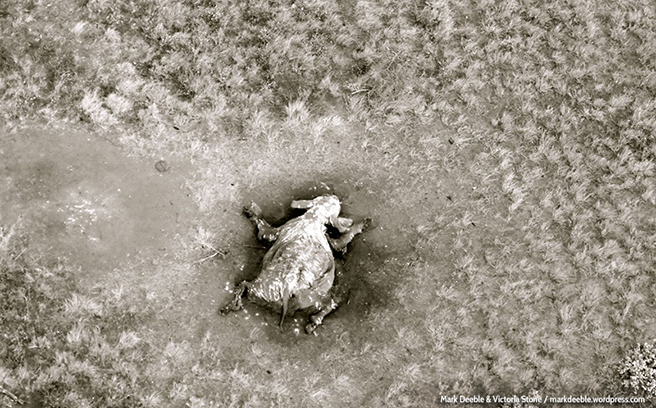The Time is Now to Save Africa's Elephants

Dear friends, I am a Mars scientist—not a wildlife activist. But I have been horrified to learn of the recent poaching of Satao, the beloved Kenyan elephant pictured here. He was poached for his ivory. The picture of his mutilated body is beyond words.
Tragically Satao’s death is just the tip of the iceberg. Last year, more than 20,000 African elephants were killed for the ivory trade. In 2012, 35,000 were killed. If this continues, African elephants will be gone in our lifetime. And for what? Mantle piece trinkets.
But you can help. Please donate to the African Wildlife Foundation. For a short time, donations will be matched by generous donors. AWF battles to save African wildlife on several fronts, not least of which is stemming demand. A mark of recent success is that some Hong Kong dealers are now declining to sell ivory. And poaching levels—though still horrific—are falling.
Satao's story has left me incredulous and immeasurably saddened. I am haunted by the horrible consequences to both the individual animals and the family groups of elephants. I have seen elephant families up close on safaris in Africa and they are a joy to watch and savor. I can't even imagine the killing of tens of thousands each year.
Why is this so important to me? I have trouble putting it in words, but I think it has to do with the beauty of these creatures, their majesty, and the senseless cruelty, carnage, and greed involved in poaching.
A friend put it this way:
“It would be very easy to just dismiss poaching as something that's happening halfway around the world in some other reality. It would be easy to say, ‘What can I do about it?’ Or to remember that a thousand desperate causes reach out to you with a thousand desperate hands.
But these magnificent creatures are dwindling in number. Their slaughter is senseless and base. And they have no one to defend them, no voice to be heard above the mad inhuman noise that is ‘modern society.’
No one but you.
Please give. Please give these gentle giants the protection they need so that animals like these may continue to make the world a beautiful, mysterious, awe-inspiring place.”
Even though I am an "animal" person and have travelled to Africa, I was ignorant of the magnitude and horror of this problem and also of the strides that are being made. Many of my friends were similarly unaware. Some even thought that because aspects of the ivory trade are illegal in the US, the problem had been solved. They were equally horrified at the reality. Getting the word out, therefore, is critical. I have been sending this email to my friends and colleagues and placing it on Facebook pages. All of you can help in the same way by passing this along to your friends, relatives, colleagues and contacts, using any and all social media avenues…and then urging those contacts to share the information with their own friends as well.
And lastly, the ivory part of the equation: I have only just realized that ivory still comes into the US. We should all protest that. And ivory should now take on the aura of something to be reviled. Shunned. Something no one should want to own or even see. I personally will boycott any establishment that I ever come across selling it.
So donate to the AWF; ask your employer if the company can make a corporate contribution or match employee donations; and spread the word. Do whatever you can think of. We CAN make a difference. But now is the time to act if these wonderful animals are to be saved.
